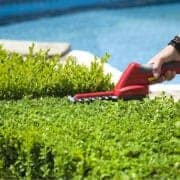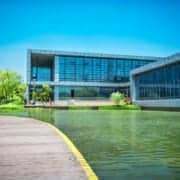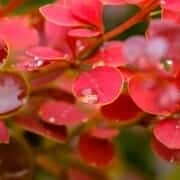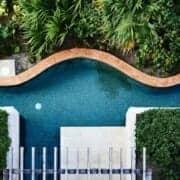Everything You Need to Know About Irrigation
Successful irrigation planning needs an in-depth understanding of soil and plant watering needs with the ability to identify suitable irrigation equipment. Planning inputs include your vision for the landscape while considering its unique features, vegetation, and local climate. Advice from seasoned commercial landscapers is invaluable when planning your watering needs. Here’s our quick guide on everything you need to know about irrigation for your commercial property.
What is the Best Type of Irrigation at Commercial Properties?
The size of gardens, lawns, and flower beds at most commercial properties rule out using widespread home irrigation methods — hand watering with a hose and using moveable sprinklers. Two major irrigation systems are used for commercial landscaping — drip or spray equipment. Whether one or the other, or a combination, is the best fit for your landscape depends on four things. These are the soil type, the landforms, the existing or planned plants, and the local climate.
Drip Irrigation for Commercial Landscaping
Drip irrigation is based on long thin tubes with small holes that allow water to drip slowly onto the ground. The term ‘trickle watering’ also describes this type of system. Drip irrigation at commercial properties can be laid on top of the soil or underground.
Benefits
A significant benefit of drip watering is the water efficiency achieved. Regular moisture is directed to plant roots with the tubes placed directly by plants. In comparison to sprinkler systems, there is minimal loss from runoff.
Impacts from the weather are reduced as well. For example, there is less water evaporation on hot days, and loss from wind lessens. Plus, with little runoff, there is minimal soil erosion.
Equipment
There are several parts to drip irrigation equipment:
- Lengths of drip tubing are connected with elbows, tees, and joiners to a water source. These enable the tubing to be configured in shapes to reach any area of the site. Clamps or specialized fittings secure the connections.
- End plugs stop water flow beyond the tubing.
- Fitted water regulators keep the flow of water even.
- Valves and gauges control water flow to specific parts of the landscape.
- In-line filters prevent the tubes from silting up and blocking water flow, and
- A programmable controller automates the time that the equipment runs.
So, many parts are involved in setting up a drip irrigation system for commercial landscaping. However, once set up, it’s mostly a set-and-forget exercise with the controller running the show.
Issues
Setting up a drip watering system can be complex and is often best left to experienced landscaping companies. In addition, with so many parts, repair and maintenance can be technical and time-consuming if anything goes wrong. Therefore, scheduling annual irrigation maintenance is worthwhile to reduce risks with the system.
Spray Irrigation for Commercial Landscaping
Spray irrigation systems center around spray nozzles inserted into tubing and pipes connected to a water source. Pop-up sprayers are often used, with the equipment only visible when operating.
Benefits
A spray system can cover a large area entirely, such as an expanse of lawn. Grass requires complete water coverage; otherwise, there will be die-offs in areas not reached. On the other hand, a drip system is limited to the place where laid and is not practical for large open space watering.
Equipment
Before laying any equipment, a trench system must be dug for the spray system. There are several parts to be installed:
- Pipes are laid into the trenches.
- The pipe system is configured using elbow joints and T-joints so that sprinkler heads can be set wherever desired.
- Sprinklers are connected and secured to the pipes with fittings and clamps.
- The spray heads are tested and adjusted to get the proper spray direction.
- The trenches are filled back in, and
- A controller is attached to the water source.
Issues
There can be high water loss in unfavorable weather conditions, such as high winds and hot days where evaporation rates are high. In addition, water pooling and runoff are common.
Water Controllers and Technology
Both drip and spray irrigation systems use controllers to automate water release and time operations. Continuing technical advancements are developing this equipment into ‘smart’ devices. For example, advanced controllers can now assess weather conditions and adjust watering schedules accordingly.
Install the Best Irrigation at Commercial Properties with State of the Art
State of the Art Landscape in Northern Virginia is highly experienced in all commercial landscaping areas and especially knows everything about irrigation. Contact us today for assistance with planning, installing, or maintaining irrigation systems. The complexity of watering systems requires experience and a professional approach to ensure no mistakes are made and that your equipment is long-lived.












Leave a Reply
Want to join the discussion?Feel free to contribute!